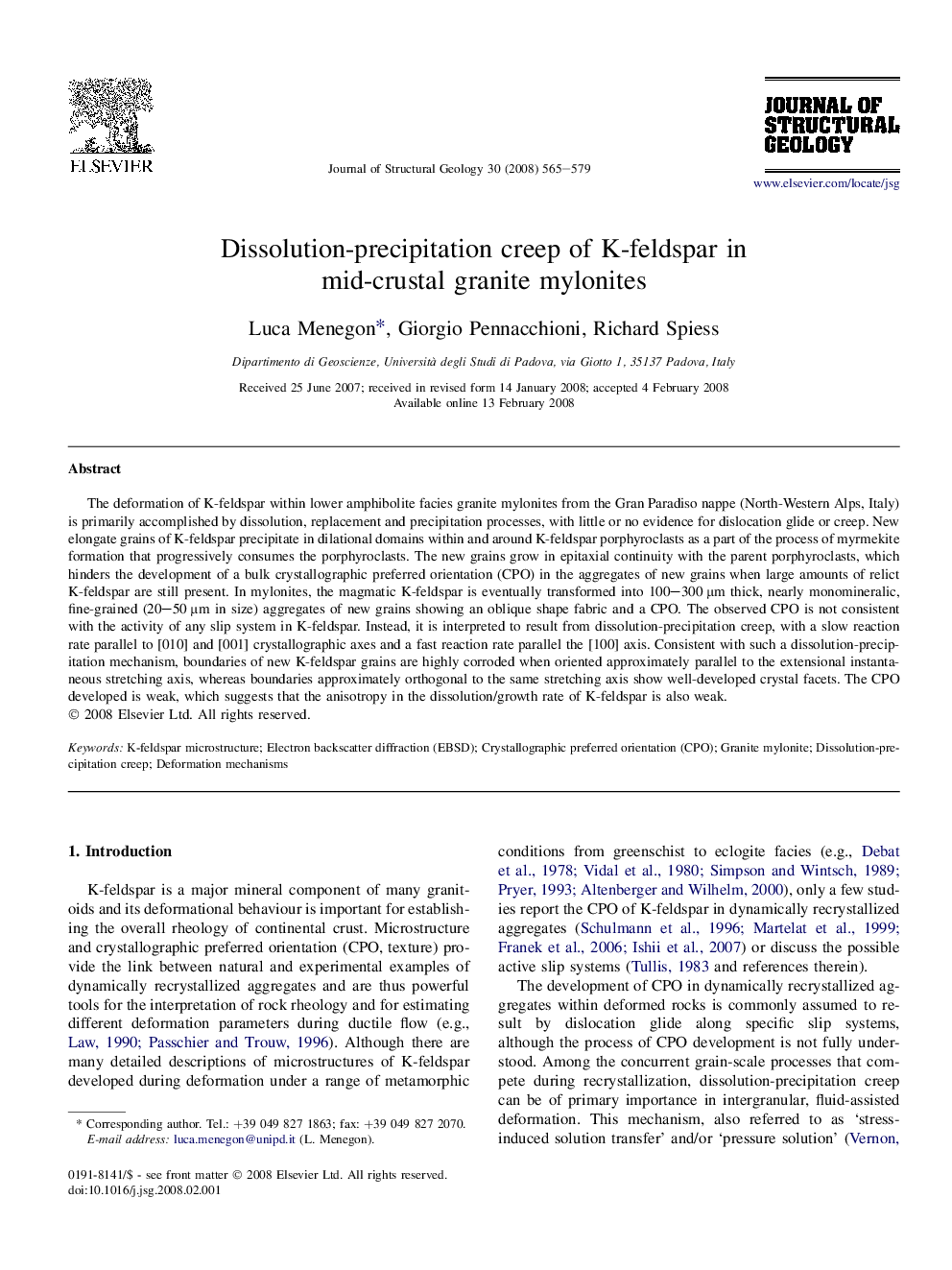| Article ID | Journal | Published Year | Pages | File Type |
|---|---|---|---|---|
| 4733750 | Journal of Structural Geology | 2008 | 15 Pages |
The deformation of K-feldspar within lower amphibolite facies granite mylonites from the Gran Paradiso nappe (North-Western Alps, Italy) is primarily accomplished by dissolution, replacement and precipitation processes, with little or no evidence for dislocation glide or creep. New elongate grains of K-feldspar precipitate in dilational domains within and around K-feldspar porphyroclasts as a part of the process of myrmekite formation that progressively consumes the porphyroclasts. The new grains grow in epitaxial continuity with the parent porphyroclasts, which hinders the development of a bulk crystallographic preferred orientation (CPO) in the aggregates of new grains when large amounts of relict K-feldspar are still present. In mylonites, the magmatic K-feldspar is eventually transformed into 100–300 μm thick, nearly monomineralic, fine-grained (20–50 μm in size) aggregates of new grains showing an oblique shape fabric and a CPO. The observed CPO is not consistent with the activity of any slip system in K-feldspar. Instead, it is interpreted to result from dissolution-precipitation creep, with a slow reaction rate parallel to [010] and [001] crystallographic axes and a fast reaction rate parallel the [100] axis. Consistent with such a dissolution-precipitation mechanism, boundaries of new K-feldspar grains are highly corroded when oriented approximately parallel to the extensional instantaneous stretching axis, whereas boundaries approximately orthogonal to the same stretching axis show well-developed crystal facets. The CPO developed is weak, which suggests that the anisotropy in the dissolution/growth rate of K-feldspar is also weak.
